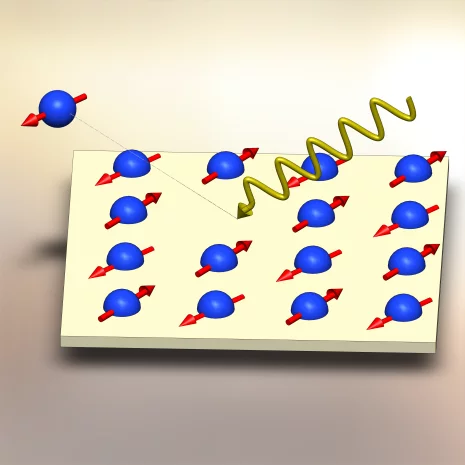The origin of the pseudogap and its relationship with superconductivity in the cuprates remains vague. In particular, the interplay between the pseudogap and magnetism is mysterious. Recent low-temperature angle-resolved photoemission spectroscopy (ARPES) experiments on the underdoped cuprate superconductors indicate the presence of a fully gapped Fermi surface (FS); even in the antiferromagnetic phase. The natural candidates for opening such a gap are competing orders such as charge or spin density waves (SDW).
A collaboration of researches from the Technion in Israel and PSI have investigated this newly discovered nodal gap in the cuprates using a combination of three experimental techniques applied to one, custom made, single crystal. The crystal is an antiferromagnetic La2-xSrxCuO4 with x=1.92%. All experiments where done in PSI. They performed angle resolved photoemission spectroscopy (ARPES) measurements as a function of temperature and found: quasi-particle peaks, Fermi surface, anti-nodal gap and below 45 K a nodal gap. Muon spin rotation measurements ensured that the sample is indeed antiferromagnetic and that the doping is close, but below, the spin-glass phase boundary. With elastic neutron scattering they determined the thermal evolution of the commensurate and incommensurate magnetic order.
The researchers found that a nodal gap opens well below the commensurate ordering at 140 K, and close to the incommensurate SDW ordering temperature of 35 K. This finding demonstrates that it is the SDW which is responsible for the nodal gap and not the standard antiferromagnetic order.
Read the article
A collaboration of researches from the Technion in Israel and PSI have investigated this newly discovered nodal gap in the cuprates using a combination of three experimental techniques applied to one, custom made, single crystal. The crystal is an antiferromagnetic La2-xSrxCuO4 with x=1.92%. All experiments where done in PSI. They performed angle resolved photoemission spectroscopy (ARPES) measurements as a function of temperature and found: quasi-particle peaks, Fermi surface, anti-nodal gap and below 45 K a nodal gap. Muon spin rotation measurements ensured that the sample is indeed antiferromagnetic and that the doping is close, but below, the spin-glass phase boundary. With elastic neutron scattering they determined the thermal evolution of the commensurate and incommensurate magnetic order.
The researchers found that a nodal gap opens well below the commensurate ordering at 140 K, and close to the incommensurate SDW ordering temperature of 35 K. This finding demonstrates that it is the SDW which is responsible for the nodal gap and not the standard antiferromagnetic order.
Read the article
Original Publication
Comprehensive study of the spin-charge interplay in antiferromagnetic La2-xSrxCuO4Gil Drachuck, Elia Razzoli, Galina Bazalitski, Amit Kanigel, Christof Niedermayer, Ming Shi and Amit Keren
Nature Communications 5, Article number: 3390, 27 February 2014
DOI: 10.1038/ncomms4390
Contact
Prof. Dr. Amit KerenTechnion - Israeli Institute of Technology, Haifa, 32000, Israel
Phone: +972-54-5954696
E-Mail:keren@physics.technion.ac.il
Prof. Dr. Ming Shi
Paul Scherrer Institute, 5232 Villigen, Switzerland
Phone:+41 56 310 2393
E-mai: ming.shi@psi.ch
